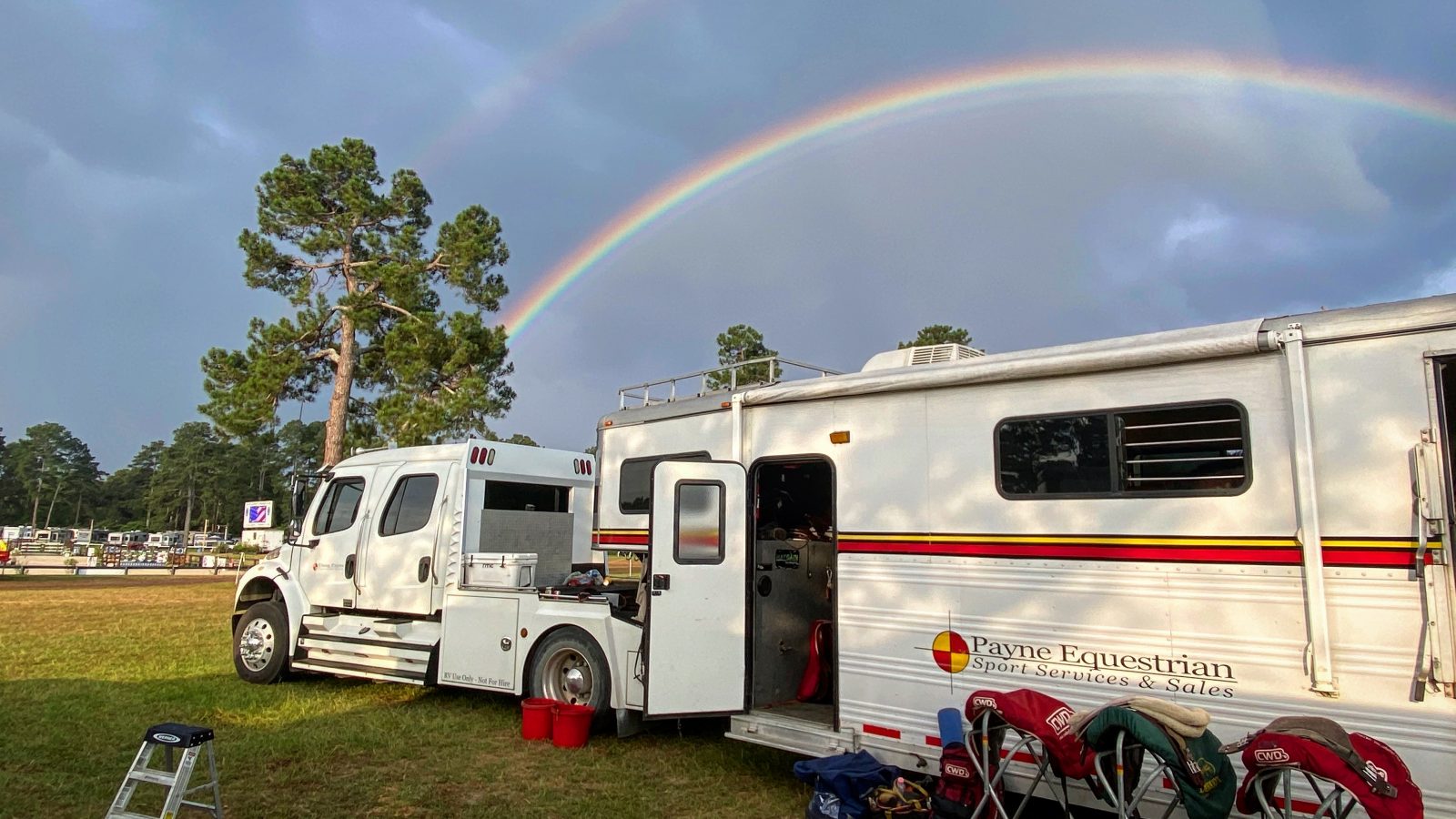5 Essential Trailering Questions With Road Warrior Doug Payne

Professional eventer Doug Payne is on the road most weeks out of the year. Between his fleet of eventing and show jumping horses, you’ll find him competing at major horse shows up and down the East Coast.
“We do 40,000 miles on the road a year, and the last thing you want to do is get stuck on the side of the road with a flat,” said Doug, who knows a thing or two about horse trailering.
Heels Down Mag caught up with Doug as the horse show season kicks back into high gear to ask him about all the essential tools of the trade when it comes to hauling horses safely.
There’s an old cowboy’s tale that it’s better to under-inflate your tires, that it makes it less bouncy for the horses. Is that true?
“I’ve never heard that. My gut feeling is that its going to increase your probability of having a flat. It’s going to get the tire hot real quick. We special order 14-ply tires. They are crazy rugged. We’ve really never had a flat since then. We do the 14-ply and inflate it to whatever is recommended. As for horse comfort, wood floors seem to be easier on the horses than an aluminum floor.”
Slant or straight loads – which is better?
“We do a lot of one-day competitions or ship-in shows. The straight load is easier because you can pull out any horse out at any time. The slant load is more tricky to pull out a horse. If you’re traveling a lot, slant loads are easier when you’re only loading one time per trip.
We’ve got cameras inside the trailer. Some say horses like to ride backward, but we’ve seen on the camera where some would scramble, but would be fine going forward. It really depends n the horse. When we’re doing really long trips with just a few horses, we’ll convert to box stalls. Some horses will put themselves naturally on a slant. Others will stand straight and never move, like if the divider is still there. If you can put cameras in there, do it. You’ll learn a lot that way.”
So gooseneck or bumper pull?
“Gooseneck all the way. They are way more stable and maneuverable. If you got a two-plus-one gooseneck, you could tack up a horse in the rain and still stay dry.”
What emergency items do you keep in the trailer?
“We’ve got a freightliner that is a medium-duty truck. We’ve got the tools that a mechanic would have in the shop. It makes it so much easier to swap out a tire quickly and fill things. Prior to getting that truck, we always carried a compressor or an air tank with us, so if a tire is low, you can pump it up. We also keep two spare tires with us. If you have one flat tire, what are you going to do if the second one goes? For an extra $100 and a little more space, it’s worth the peace of mind.
I would keep the Trailer Aid ramp with you always. They make it so much easier to do everything. We have reflector triangles and flares in the truck but never used them. It’s still a good thing to have just in case.
As far as horse stuff, we have anything topical we would need to treat a cut or would. Basically it’s all the same stuff we keep in the barn for emergencies, including Banamine and Ace – just in case you have to use it. I do recommend keeping the drugs in the trailer and not the truck, though. It can be hard to explain if you ever got pulled over.”
How do I know that the trailer brakes are working, and I’m not just feeling my truck brakes?
“Some brake systems have a separate controller box that is mounted somewhere inside the cab. Or in newer models, it’s integrated into your truck already. Ask your trailer manufacturer or mechanic so you know where it is. You need to be able to adjust that accordingly. When you go to stop, you should feel the trailer brakes just barely grab as your truck brakes begin to stop. It should be a clear difference. But like your truck, your trailer brakes will need to be serviced from time-to-time, too.”


